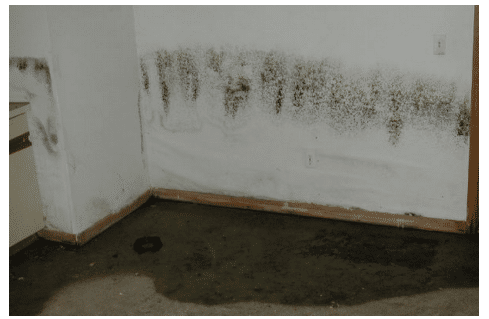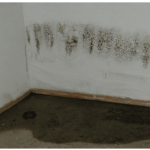Mold isn’t just unsightly—it can pose serious health risks and damage your home’s structure. Whether you’ve seen signs of mold in your basement or just want to prevent future growth, understanding how mold forms and how to effectively prevent and remove it is essential. With proper humidity control, ventilation, and swift action, you can keep your home mold-free and your family safe.
Key Takeaways
-
Mold thrives in moist, poorly ventilated areas—especially basements, crawlspaces, and bathrooms.
-
Reducing humidity, sealing leaks, and improving airflow are effective ways to prevent mold.
-
Quick removal of mold spots using proper techniques can stop it from spreading.
-
Mold exposure can lead to health problems, especially for those with allergies or respiratory conditions.
-
Professional mold remediation is often the safest and most thorough solution for widespread issues.
What Causes Mold Growth?
Mold is a type of fungus that grows in damp, dark, and poorly ventilated areas. It spreads through airborne spores and needs only three things to thrive: moisture, organic material, and time. Common causes of indoor mold include:
-

High humidity levels (especially above 60%)
-
Leaks in plumbing, roofs, or windows
-
Flooded basements or crawlspaces
-
Poor ventilation in bathrooms and laundry rooms
-
Condensation on walls, pipes, or windows
Once mold starts to grow, it can spread quickly, damaging walls, ceilings, flooring, and even furniture.
Health Risks of Mold
Mold can have a serious impact on your health—particularly black mold (Stachybotrys chartarum). Exposure can trigger:
-
Allergies (sneezing, runny nose, itchy eyes)
-
Asthma attacks
-
Headaches and fatigue
-
Skin rashes
-
Long-term respiratory issues
Infants, the elderly, and people with compromised immune systems are especially vulnerable. That’s why early prevention and quick remediation are so important.
Mold Prevention Strategies
Stopping mold before it starts is always easier (and cheaper) than removing it after the fact. Here are proven ways to prevent mold in your home:
1. Control Humidity Levels
Keep indoor humidity between 30% and 50%. You can do this by:
-
Using dehumidifiers, especially in basements and crawlspaces
-
Running exhaust fans in bathrooms, kitchens, and laundry rooms
-
Avoiding indoor drying of clothes in poorly ventilated spaces
2. Repair Leaks Promptly
Check regularly for leaks in:
-
Roofs
-
Pipes
-
Basement walls
-
Window seals
Fix any water intrusion immediately to prevent lingering moisture.
3. Improve Airflow
Stagnant air allows moisture to accumulate. Encourage airflow by:
-
Opening windows when weather allows
-
Keeping doors open between rooms
-
Using ceiling or portable fans
4. Insulate Pipes and Windows
Cold surfaces can cause condensation. Insulate pipes and seal drafty windows to avoid moisture buildup in hidden spots.
5. Monitor Problem Areas
Basements, attics, and crawlspaces are mold hot spots. Conduct seasonal checks for musty odors, discoloration, or dampness.
How to Remove Mold
If you do find mold, it’s crucial to act quickly to stop it from spreading. Here’s how:
DIY Mold Removal for Small Areas
If the affected area is less than 10 square feet, you can likely handle it yourself. Follow these steps:
-
Wear protective gear: gloves, mask, and goggles.
-
Scrub the area with detergent and water.
-
Disinfect using white vinegar or hydrogen peroxide (never mix with bleach).
-
Dry the area thoroughly.
Avoid using bleach on porous materials like drywall—it doesn’t fully kill mold and can actually encourage regrowth.
When to Call a Professional
Call a mold remediation expert if:
-
The mold covers more than 10 square feet.
-
You have recurring mold despite cleaning.
-
It’s in HVAC systems or behind walls.
-
Family members are experiencing unexplained health symptoms.
Professionals use HEPA filtration, negative air pressure, and antimicrobial treatments to fully remove mold and prevent future outbreaks.
Maintenance Tips for a Mold-Free Home
Ongoing maintenance is essential to keep mold at bay. Follow these habits:
-
Run a dehumidifier in humid seasons, especially in basements.
-
Clean and maintain gutters to prevent leaks.
-
Inspect your roof after storms.
-
Test your sump pump regularly.
-
Schedule yearly home inspections, especially if your home has a history of water issues.
By being proactive, you can avoid the stress and cost of mold remediation.
Real-Life Example: Successful Mold Remediation
A homeowner in Ohio discovered mold behind drywall after a basement flood. After removing the wet drywall and insulation, they hired a professional to treat the entire basement. The team installed a dehumidifier, waterproofed the foundation, and sealed air leaks. Today, the basement is dry, clean, and mold-free—a perfect example of prevention and remediation working hand-in-hand.
Frequently Asked Questions
What’s the best way to kill mold naturally?
White vinegar and hydrogen peroxide are effective natural cleaners. They kill mold on hard surfaces and are safer than bleach.
Can mold come back after cleaning?
Yes, if moisture problems persist. Prevent recurrence by fixing leaks and using dehumidifiers.
Does homeowners insurance cover mold removal?
Typically only if caused by a covered event (like a burst pipe). Mold from long-term leaks or humidity usually isn’t covered.
How fast does mold grow?
Mold can begin growing within 24–48 hours of a moisture event if the conditions are right.
Can I paint over mold?
No. Painting over mold traps moisture underneath and can lead to bigger problems. Always remove it first.
Final Thoughts
Mold prevention and removal are about vigilance, control, and action. Don’t wait until you smell that telltale musty odor or see black spots creeping across your walls. By managing moisture, inspecting vulnerable areas, and responding promptly to signs of mold, you can protect your home and your health.
If you’re unsure how to proceed or dealing with a persistent mold issue, a professional mold remediation service can restore your home safely and completely.



